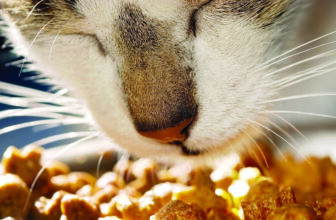
Check out our latest products
Recent scientific studies reveal fascinating insights into feline cognition and spatial awareness. Cats possess remarkable abilities to track their owners’ movements throughout the home, even when visual contact is lost. This mental mapping capability demonstrates sophisticated cognitive processes that researchers are only beginning to understand.
Domestic cats exhibit extraordinary auditory tracking skills that allow them to maintain mental maps of their human companions’ locations within familiar environments. This cognitive ability, known as sociospatial cognition, enables felines to process acoustic information and create detailed mental representations of moving targets they cannot see. Understanding these mechanisms provides valuable insights into feline intelligence and behavior patterns.
The science behind feline spatial awareness
Sociospatial cognition represents a sophisticated mental process where animals create and maintain spatial representations of other living beings within their environment. This capability proves particularly advantageous during low-visibility conditions or when visual barriers obstruct direct observation. Cats utilize their exceptional auditory processing abilities to gather acoustic information, including vocalizations and environmental sounds, which they then translate into precise spatial coordinates.
The relationship between object permanence and spatial tracking forms the foundation of this cognitive ability. Object permanence involves maintaining mental representations of entities that are no longer directly perceivable through the senses. Humans develop this capacity during early childhood developmental stages, while numerous non-human species including great apes, corvids, bears, and canines also demonstrate these skills.
Feline auditory systems possess remarkable sensitivity and directional accuracy, making them particularly well-suited for acoustic-based spatial tracking. Their ability to detect subtle sound variations allows cats to distinguish between familiar and unfamiliar voices while simultaneously processing location-based auditory cues. This combination of auditory acuity and cognitive processing enables cats to maintain continuous awareness of their owners’ whereabouts throughout domestic environments.
Experimental evidence of mental mapping abilities
Research conducted by Saho Takagi and colleagues at Azabu University in Japan provided compelling evidence for feline mental mapping capabilities through carefully controlled experimental conditions. The study employed three distinct experimental phases designed to test cats’ responses to spatial incongruence in familiar voice patterns.
The experimental protocol involved the following key components :
- Habituation phase : Cats heard their owner’s voice calling their name five times from a consistent speaker location
- Testing phase : Voices were played from either the same location or a different position immediately after habituation
- Control conditions : Researchers tested responses using unfamiliar human voices, cat vocalizations, and non-vocal sounds
- Response measurement : Surprise reactions were documented when spatial expectations were violated
The most significant behavioral responses occurred when cats encountered their owner’s voice emanating from unexpected locations. This “same sound, different location” condition produced the strongest surprise reactions, indicating that cats had formed specific expectations about their owner’s spatial position based on previous auditory input. These reactions disappeared when researchers substituted cat vocalizations or non-vocal sounds, confirming the specificity of human voice recognition in spatial tracking.
Implications for understanding feline intelligence
These findings reveal that cats possess sophisticated cognitive architecture capable of integrating temporal and spatial information to create dynamic mental maps of their environment. The ability to mentally represent invisible entities demonstrates advanced reasoning capabilities that extend beyond simple stimulus-response patterns.
The research suggests that felines actively process environmental information to construct comprehensive situational awareness models. This capacity for invisible object tracking indicates that cats engage in complex mental reasoning processes, constantly updating their understanding of their surroundings based on available sensory input.
Such cognitive abilities likely evolved as adaptive mechanisms for survival in natural environments, where tracking prey, predators, and social companions without direct visual contact would provide significant survival advantages. Domestic cats have retained these sophisticated mental mapping skills, applying them to their relationships with human caregivers within home environments.
Understanding feline spatial cognition enhances our appreciation for the complexity of cat-human relationships and provides valuable insights into how domestic cats navigate and interpret their living spaces. This knowledge can inform better practices for cat care, environmental enrichment, and behavioral management in domestic settings.


![[PETHROOM] Cat Nail Clipper Trimmer for Indoor Cats with Circular Cut Hole (2mm) | Premium Sturdy Stainless Steel Blade Cat Claw | Safe, Easy, Accurate, Quiet & Fast | Avoid Overcutting](https://m.media-amazon.com/images/I/6156hi88deL._AC_SL1298_.jpg)
![[PETHROOM] Professional Eye Comb for Pets | Stainless Steel Tear Stain Remover for Cats & Dogs | Gentle Round-Head Grooming Tool | Compact & Portable for Eye Gunk Removal](https://m.media-amazon.com/images/I/71+W758uwXL._SL1500_.jpg)
![[petora] BRUSH ON ME Gentle Facial & Eye Comb for Dogs & Cats | Smooth & Stress-Free Tear Stain Remover | Fine-Tooth Grooming Tool with Rounded Tips | Comfortable Grip for Daily Pet Grooming](https://m.media-amazon.com/images/I/81hzVmjgV1L._SL1500_.jpg)









